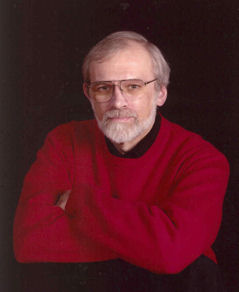That may be because we don't know how much our cars cost us compared with public transit. Knowing that good transit is a good investment, I set out to calculate what a county-wide transit system would save. I'm considering the ability of households to save money by giving up one automobile, assuming they own more than one.
Using data from the Census Bureau, we find 134,187 households in Washtenaw County, and projecting from figures on page 28 of the WATS 2007 Transit Plan, we can estimate there are 22,706 families with zero or one car. These households may not be able to reduce their auto-related costs significantly, even with improved transit, so we'll remove them from consideration.
That leaves 112,980 households that could reduce their number of cars if we had good, county-wide transit. How much would they save each year? Based on car ownership costs and gas prices surveyed by AAA on November 9, 2009, APTA estimates the nation-wide average saving is $9,190 annualized for households giving up one automobile and using transit.
Supposing every household that could, would give up one car and use transit. The theoretical savings for Washtenaw County would be 1,038,286,200, though of course that is unrealistic. Instead, let's suppose 20% of multi-vehicle households decided to get along with one less. The resulting county-wide savings would be $207,657,240.
Suppose we were to offer residents to split these savings between them and county-wide transit, with 75% of that remaining in the households, and 25% going to fund transit. That would leave the residents with $155,742,930, and give the agency $51,914,310: 181% of AATA's 2009 budget. Could that amount fund high-quality, county-wide transit?
The cost per household would be $386.88, while the household savings would be $1,160.64: a 300% return on investment.
How can we afford not to do that?
OK, I know there are quite a few people who would dispute this on several grounds. I'll have a go at playing devil's advocate, then answering their points:
- Your estimate is based on everybody paying the tax, but only 25% of tax-payers using transit. Why should the non-users subsidize the users?
Answer a: Non-users benefit by roads relieved of 20% of their congestion. It costs far more to expand the road system, both in dollars and in environmental damage; plus in many places there simply is no more land to build roads on. If the county's population grows (and it is growing), congestion will grow worse with no practical way to build our way out of it.
Answer b: There is always a well-documented increase in business investment in areas offer good transit. Thus, investing in transit increases the tax-base, reducing the burden on individual tax-payers.
Answer c: Even those who don't use transit regularly will be able to use it occasionally, for example, when their car is in the shop or to send their kids to soccer practice. The better the transit system, the more convenient it will be to meet those needs. - Buses are not as efficient as they're cracked up to be, because they spend so much of their time driving around nearly empty.
Answer a: Most bus efficiency figures are based on cost per passenger-mile, which takes into account the high and low times.
Answer b: A serious effort is being made to get rail transit for Washtenaw County. Rail is even more efficient than bus, because of energy savings from steel wheels on steel rails, and because one operator can handle a vehicle that carries far more passengers.
Answer c: When automobile efficiency is calculated, the cost of parking spaces should also be included, but often isn't. Each car requires roughly three parking spaces: one for home, one for work, and one for shopping, school, or entertainment. In addition to the construction and maintenance costs of each parking space, there is significant environmental impact due to the impermeable surface creating dangerous storm runoff, and because large parking lots force businesses to be farther from each other and from the street, increasing travel time, expense, and discouraging walking. - That's a lot of savings! Aren't they going to come from other, established areas of spending, and hurt local businesses?
Answer a: Some would come come from local business such as gas stations, car dealers, and maintenance shops, yes. But consider the increased employment in transit operation and maintenance.
Answer b: A great deal of the cost of driving an automobile leaves the local area already, including finance charges (in many cases) and most of the cost of gasoline. With lower energy use per passenger mile, transit costs return a higher percentage to the local economy.
Answer c: According to AAA, 23% of the average cost of automobile ownership is depreciation - the cost of a new car spread over its useful lifetime. Economists tell us the rapid depreciation of autos makes them a poor investment. That's true even in Michigan, when you consider that a relatively small percentage of autos that drive in Michigan are actually assembled here, and that their parts come from all over the world anyway. Using the savings figures I estimated, $155.7 million could be invested or spent in other ways that boost the local economy. - All these figures are based on estimates. As far as I'm concerned, they're a crock.
Answer a: Yes, they're estimates. Every business venture, before making an investment, makes similar estimates based on currently available figures, with a lot of assumptions thrown in. I've tried to make the figures and assumptions clear so you can reach your own conclusions. Please do so in a responsible manner.
Answer b: This took me - an amateur - a few hours to figure and write up. We do need more accurate estimates, so more time and expertise is needed. That's probably why AATA wants to hire a consultant to prepare a proposal for county-wide service.







